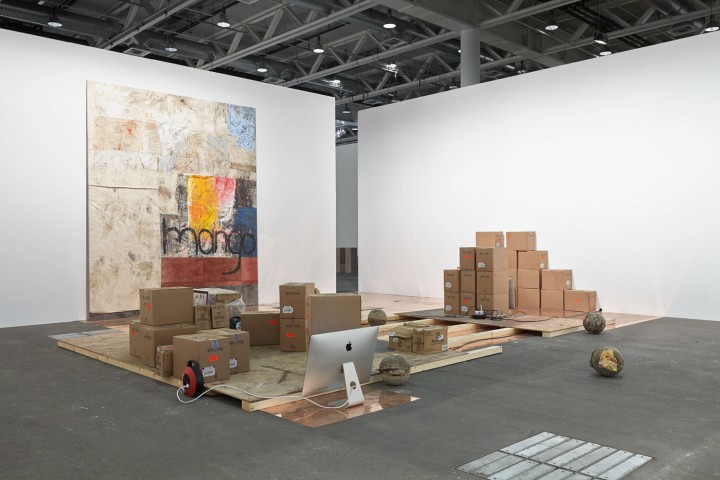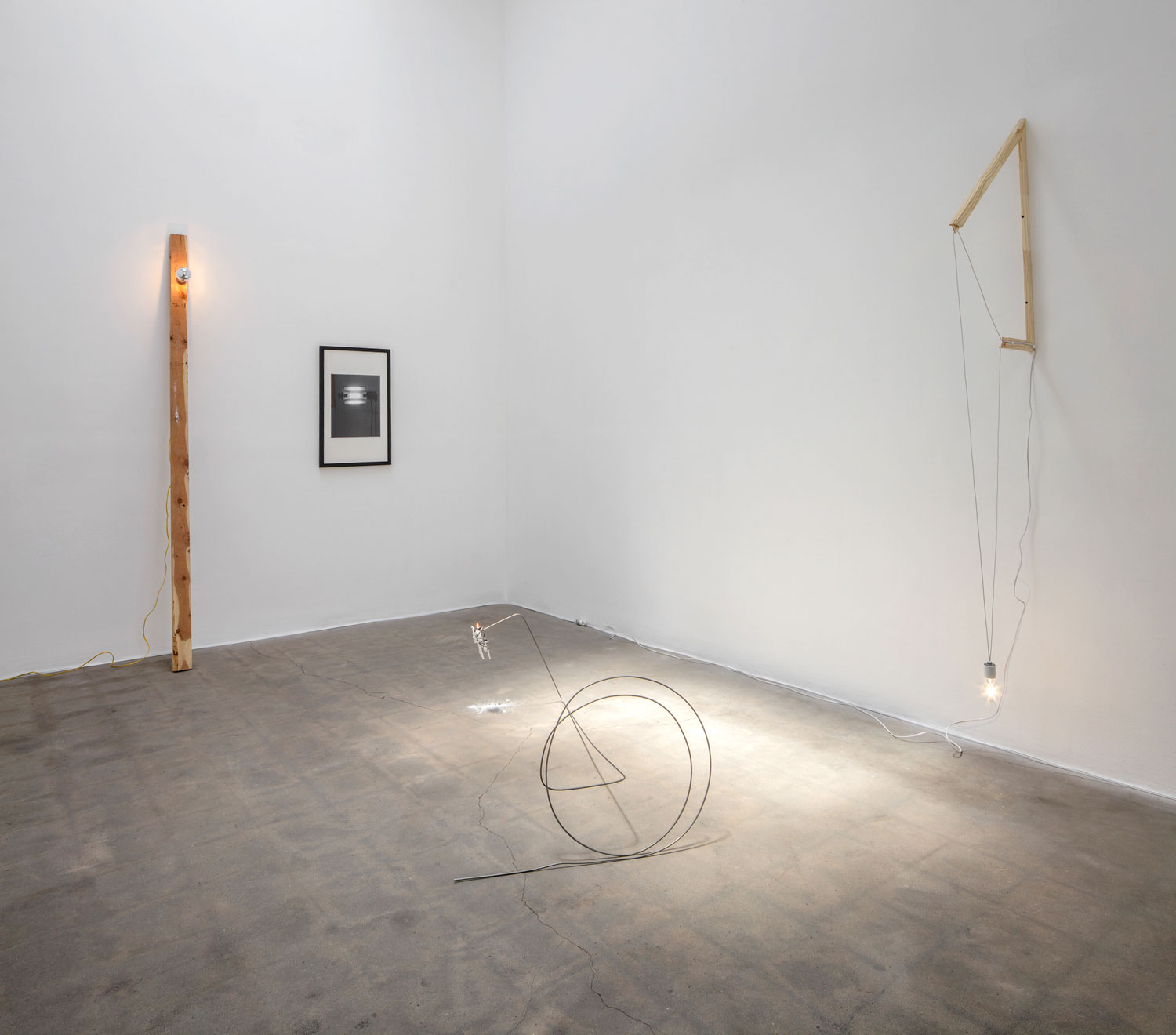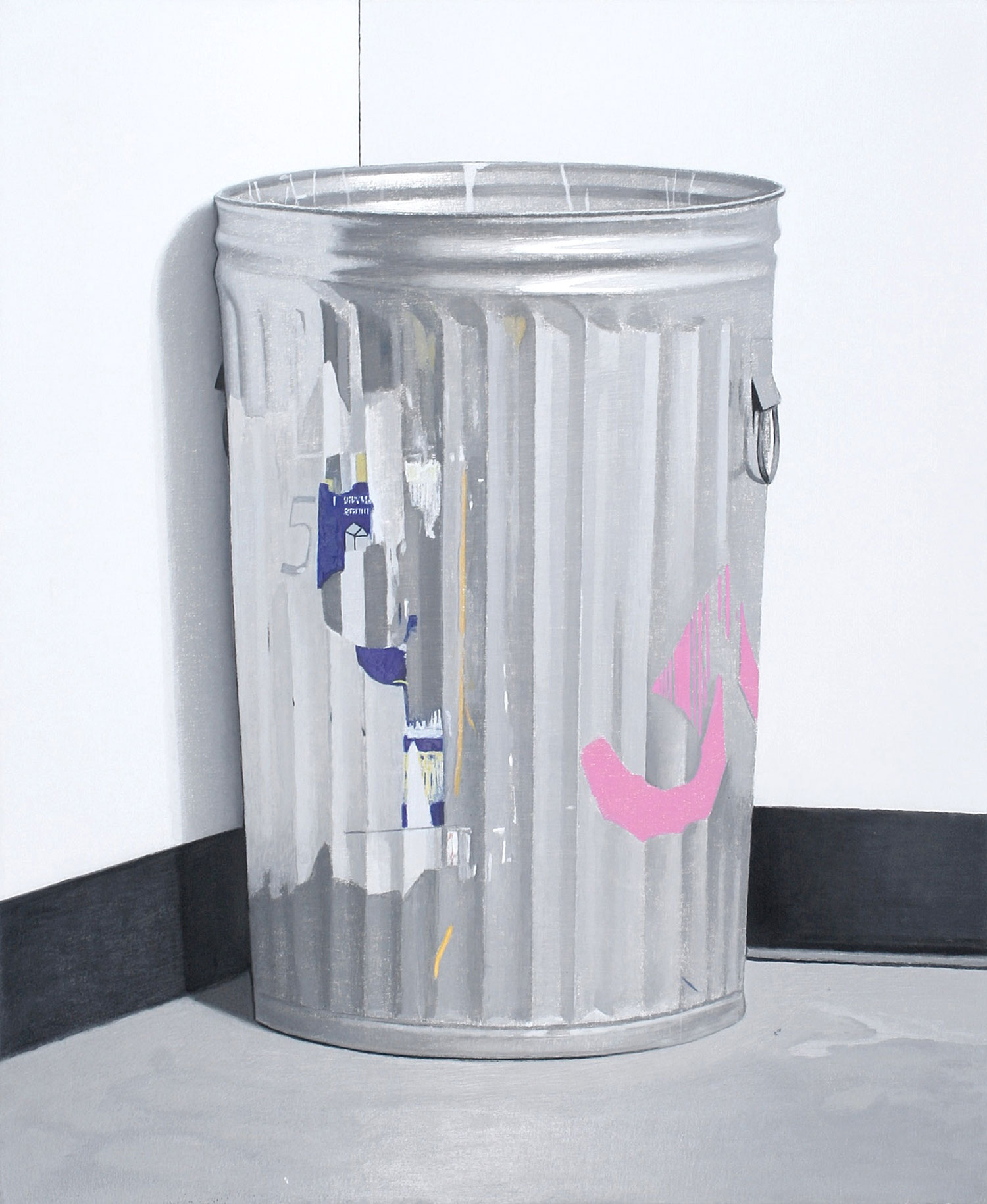
Beatrix Ruf: 2012 was a very active year for you. Let’s start with the last month of 2012 in which you showed the results of a four-week residency at the Rubell Family Collection space in Miami. On this occasion your first catalogue was published, you created a Kilimanjaro Magazine special issue, and you were the cover story for a Miami art magazine — a photograph that heavily referenced the legacy of Jean-Michel Basquiat, bringing into play your Colombian heritage and your life as a cleaner in London. How do you deal with some of these assumptions?
Oscar Murillo: Undeniably the previous year was very packed with many projects, and as you pointed out, December of 2012 at the Rubell Family Collection was a phenomenal platform in which my practice was situated. After December I swiftly left Miami and traveled south to Colombia — it was most definitely a necessity to escape certain speculative suppositions about my heritage, my position as an artist and romantic speculations about my life as a cleaner in London. I truly think there’s nothing quixotic about a person wishing to make a living in an industry that offers mechanical labor; it’s a practical solution to the problematic of having to make art and survive in a metropolis like London.
Colombia offered plenty of time and space to think and reflect, while simultaneously re-energizing me for a return to Europe. Paradoxically, the small village where I grew up in Colombia has no idea who Jean-Michel Basquiat is or who I am for that matter. In Colombia, by default, you have to adopt your father’s surname. I found this to be a bit macho and opted to use Murillo in honor of my mother. I think mostly US audiences like to glamorize these notions of an exotic situation, but they fail to scrutinize, and I think this is as far as a link to a Basquiat legacy goes.
In January 2013 I hit the ground running. I started the year with a very exciting solo project in Rotterdam at Showroom MAMA before opening a group show with CO-CO Vienna hosted at CRAC Alsace. Both projects are linked in simple terms. I set up a Bingo Boutique where T-shirts inspired by my previous performance last September at the Serpentine —The Cleaners’ Late Summer Party with COMME des GARÇONS — will be on offer through the participation in Bingo rounds every week. From late January I spent the time working towards “Dinner at the members club? Yes! i’ll have a black americano first pls” at Carlos/Ishikawa in London, which opened late March. The show provided the opportunity to coherently bring together various aspects of my practice in the formal context of a gallery space.

BR: Let’s talk about categories and categorizing a little more; your work is very much received in the category of painting, but then many of your activities involve performative actions, de-contextualizations of social practices, celebrations and cultural transfers. Can you talk about this?
OM: For a while, perhaps more so than painting, I have been involved in developing projects in the realm of cultural re-contextualization or cultural evaluation. These projects deal with a desire to take certain social aspects of one culture or another, or universally known subjects like a birthday party, and place them in situations that can often cause initial unease but are there to highlight what I find to be an abundance of social disability among parts of our society. These engagements really took off around four years ago as I completed a year-long residency program at Kingsgate Workshops in London. The program offered me a stipend to spend some time abroad looking at museums, but I decided to use the money to make a series of projects involving my family and the surrounding community, the first of which involved inviting Somali people from that area’s community on a trip to Kew Gardens in the suburbs of West London. That was a catalyst, which went on to propel various cooking interventions, some of which happened in galleries. A memorable one wasAnimals die from eating too much, Bingo!(2011) at Carlos/Ishikawa: guests on a gallery tour were invited to have folk Colombian food and play bingo. The bingo prizes were linked to the London Riots that same year, merchandise that had symbolic connections to the kind of goods the rioters targeted. This was followed byAnimals die from eating too much, Yoga! The titles were interlinked as the two projects happened a week apart from each other and elements from the former were transformed — such as the Bingo cards into posters, the tables into yoga mats and various other elements.
Earlier on in 2012 at Art Rotterdam the entire booth of Carlos/Ishikawa was turned into an arena where two friends used the booth to socialize with champagne and canapés while marking stacks of Bingo paintings with random numbers linked to Bingo games while watching YouTube videos being streamed by friends in Colombia.
More or less at the same time, the Serpentine Gallery invited me to interact with Lygia Pape’s show at the gallery. There I used a cleaning cart stocked with candy, crisps, drinks and tobacco, offering visitors the chance to indulge as they paraded through the gallery. Higher profile projects followed in the summer of last year with the LUMA foundation in Arles, where, in the town’s Roman amphitheater, for the duration of a week, I experimented with various activities. A vivid memory of one was lapping the arena for an hour while having my playlist wired to the sound system of the arena. Then I organized a fictitious birthday party for both of my parents between Colombia and London, which then traveled to Paris, hosted by a bourgeois collector’s apartment across from the US embassy in the center of Paris — and, as I mentioned earlier,The Cleaners’ Late Summer Party with COMME des GARÇONS at the Serpentine. And currently I’ve just set up two Bingo Boutiques in CRAC Alsace and MAMA Showroom Rotterdam.

BR: Movement, change of location and physical activity all play a huge role in your work. But then you have a studio practice as well. I remember we looked at your drawings together once, which seemed to layer a lot of activities that you “perform” in the studio. In Arles, and with all the projects by the artists realized in the amphitheatre for “To the Moon via the Beach,” I was most intrigued by the process of working turning into a work. How do you work in the studio?
OM: The video I just shared with you — a labor-intensive factory situation — very much exemplifies my studio practice, not in the Warholian sense of mass production, but in the attention to firsthand involvement. In fact, this specific example is a very personal one: the people in the factory and its history are very closely interwoven with my growing up. Had I still lived in Colombia I would probably be working in the “bar” at Colombina (the candy factory) as my friends who work there call it. This is the area where all the liquid candy is poured on the glossed table before it gets turned by two giant, seductive steel arms.
Metaphorically speaking in relationship to my own working-to-work process in the studio, I jump from one process to another, barely considering formal ideas of painting. However, I am intensively processing material — mark making, dying canvases, folding material — and I always refer to cooking when speaking of methodologies in my practice. It is a one-frequency, one-strata playing field. I mean, there aren’t any hierarchies. So absolutely, working turns into work, this contradictory mode of existence counterbalances the other ephemeral social ways of producing work — but there is a strong crossover.





